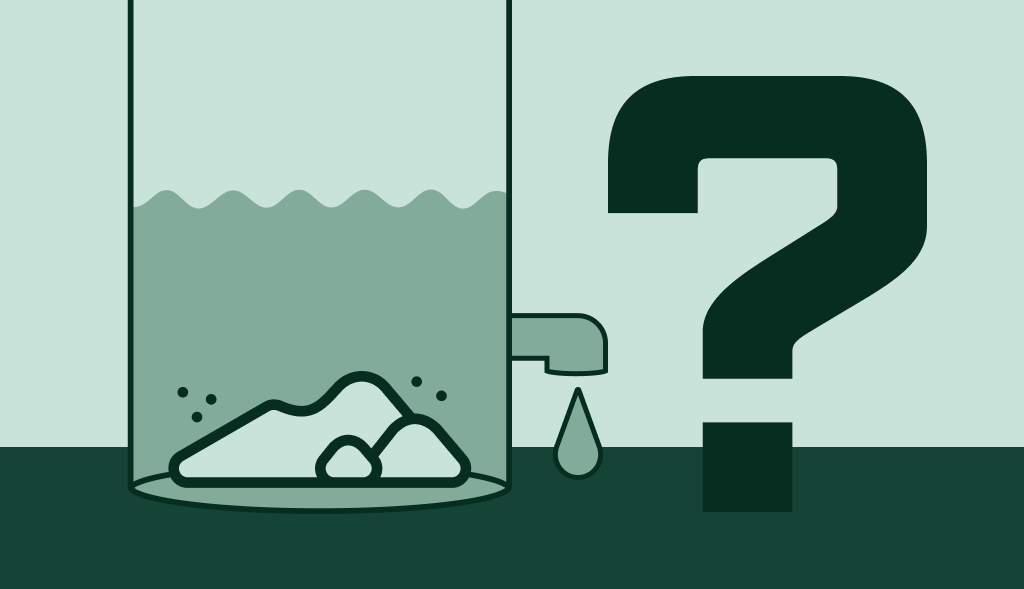How to Dissolve Sediment in Your Water Heater

Water heaters play a crucial role in every household. Unfortunately, they can become less efficient over time due to sediment buildup. Sediment in a water heater settles at the bottom of the tank, reducing its capacity, making it less efficient and potentially shortening its lifespan. This article will guide you through the steps to dissolve sediment in your hot water tank using a garden hose.
Understanding Sediment Buildup in Water Heaters
What is Water Heater Sediment?
Sediment buildup is primarily composed of minerals such as calcium and magnesium, which naturally exist in water. Over time, these minerals settle at the bottom of the tank, leading to a decrease in the water heater’s efficiency and an increase in energy consumption.
Signs of Sediment Buildup
Identifying the problem early on can save you a lot of trouble. Watch out for cloudy hot water water, a decrease in hot water output, an increase in water temperature, or odd noises from the water heater.
Steps to Dissolve and Remove Sediment From Your Water Heater
Follow these detailed steps to tackle the sediment in your water heater effectively. It’s essential to perform these steps regularly to maintain your water heater’s longevity and efficiency.
Turn off the Water Heater
Start by turning off your water heater. If you have an electric water heater, switch off the power from your circuit breaker.
Connect a Garden Hose
Next, connect a garden hose to the drain valve located at the bottom of the tank. The other end of the hose should be in a safe location where hot, dirty water can safely discharge.
Turn Off the Cold Water Supply Valve
It’s now time to turn off the cold water supply valve. This is typically found at the top of the water heater.
Open the Hot Water Faucets
Opening the hot water faucets in your home will allow air to enter the hot water tank, which will help drain the water more effectively.
Open the Drain Valve
Once the faucets are open, proceed to open the drain valve. Water should start to flow out through the hose. In some cases, your water heater may be fitted with a smaller valve, which can impede the sediment removal process due to the narrow opening. If you find that the sediment is not being flushed out efficiently, consider installing a larger, full-port ball valve.
A bigger drain valve allows for better water flow, which in turn can significantly improve the effectiveness of sediment flushing. When the valve is opened, the water runs may initially appear cloudy – this is a sign that the sediment is being removed.
Turn the Cold Water Supply Back On
After the tank is empty, turn the cold water supply back on with the drain valve still open. This process helps to rinse and flush out any remaining sediment.
Close the Drain Valve and Open Cold Water Supply
Once the water runs clear, close the drain valve and turn the cold water supply back on to refill the tank. Remember to close the hot water faucets only after a steady stream of water flows out, ensuring that the air has been purged from the system.
Check Water Flow and Temperature
Finally, check the hot water faucets in your home to make sure the water flow and temperature are back to normal. If the water flow is still reduced or the temperature is still high, repeat the process.
Turn Your Water Heater Back On
When the water flow is back to normal, you can turn your water heater back on. For electric water heaters, turn on the power at the circuit breaker.
Preventing Sediment Buildup
Regularly Flush Your Water Heater
Now that you’ve flushed your water heater, make sure to regularly perform this process. The frequency depends on the hardness of your water, but a good rule of thumb is once a year.
Install a Water Softener
Consider installing a water softener if your area has hard water. A water softener removes minerals that cause sediment, increasing the lifespan and efficiency of your water heater.
Regular Maintenance
Ensure regular maintenance of your water heater. This includes checking and replacing the heating elements if necessary, and considering professional help if you encounter complex problems.
Use a Corro-Protec Powered Anode Rod
Another effective way to prevent sediment buildup is by installing a Corro-Protec powered anode rod in your water heater. An anode rod is a crucial component that helps to control the rate of rust and corrosion in the tank. Corro-Protec powered anode rods are unique because they provide active protection against corrosion, unlike traditional sacrificial anode rods.
The Corro-Protec rod uses a small current to create an environment inside the tank where the corrosion of the tank is nearly impossible. This not only helps to extend the lifespan of your water heater, but it also reduces sediment buildup caused by the corrosion of the tank’s inner wall. With easy installation and a long lifespan, the Corro-Protec powered anode rod is a worthy investment for any homeowner wanting to keep their water heater at peak efficiency.
Final Word
By following this comprehensive guide, you can effectively remove the sediment from your water heater, ensuring it runs efficiently and lasts for a long time.
DISCLAIMER: The information provided is for general DIY guidance on water heater maintenance and does not replace professional advice or service. Risks include electric shocks, burns, and property damage. Prioritize safety, follow manufacturer’s guidelines, and consult with professionals if unsure. Comply with local laws and obtain necessary permits. Use this information at your own risk; the provider assumes no liability for any injuries or damages. If in doubt, hire a professional.
Blog
Water Heater Recirculating Pump : Why And How Does It Work?
What is a Hot Water Recirculating Pump and How Does It Benefit Your Home? Every homeowner knows the inconvenience of waiting for hot water to […]
Troubleshooting: Why Your Hot Water Heater Is Not Working
When you want a warm bath or shower but only get cold water, it can be really annoying. If your hot water heater isn’t working, […]

